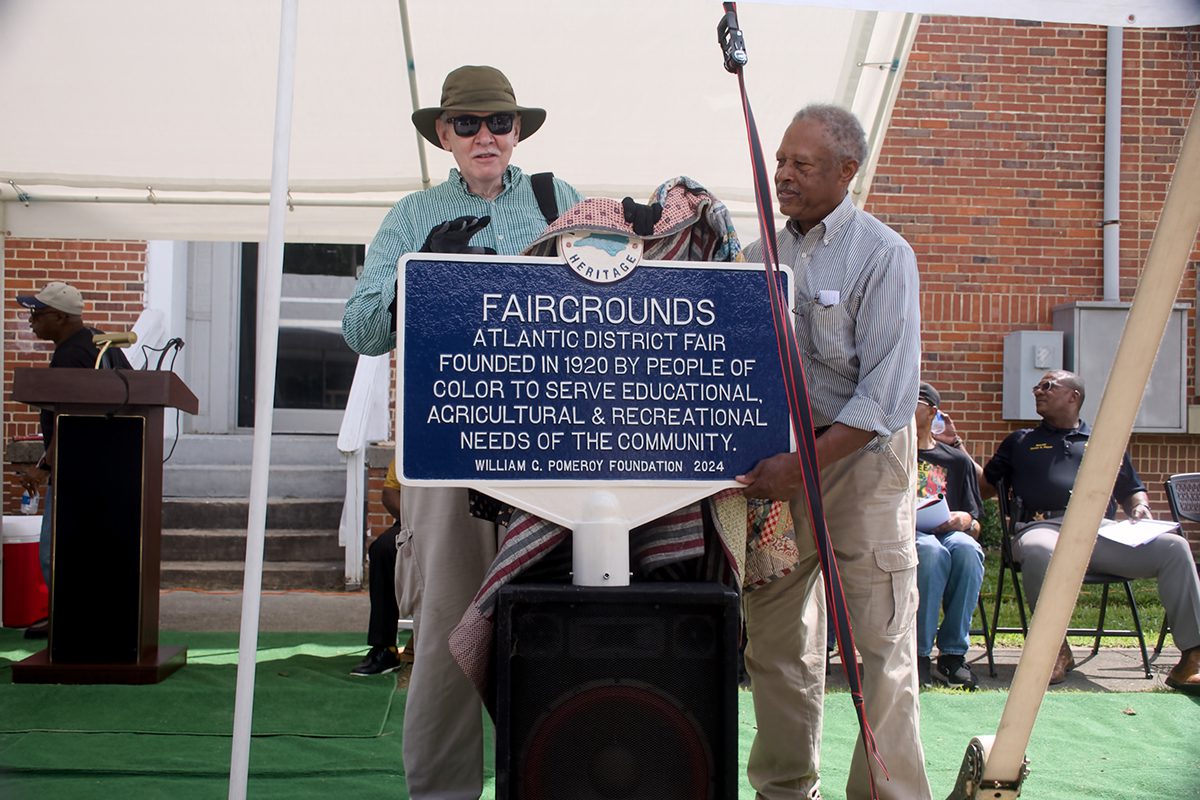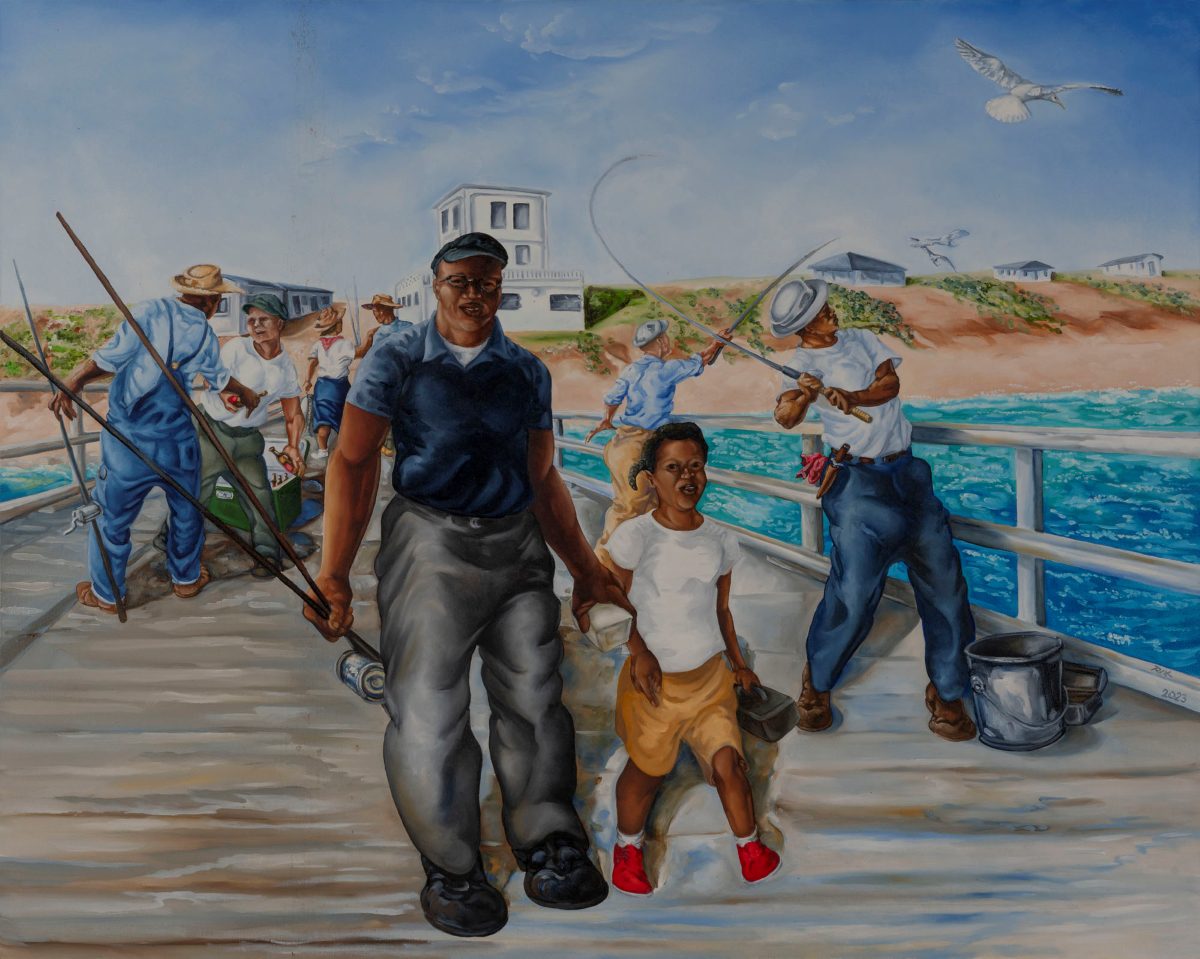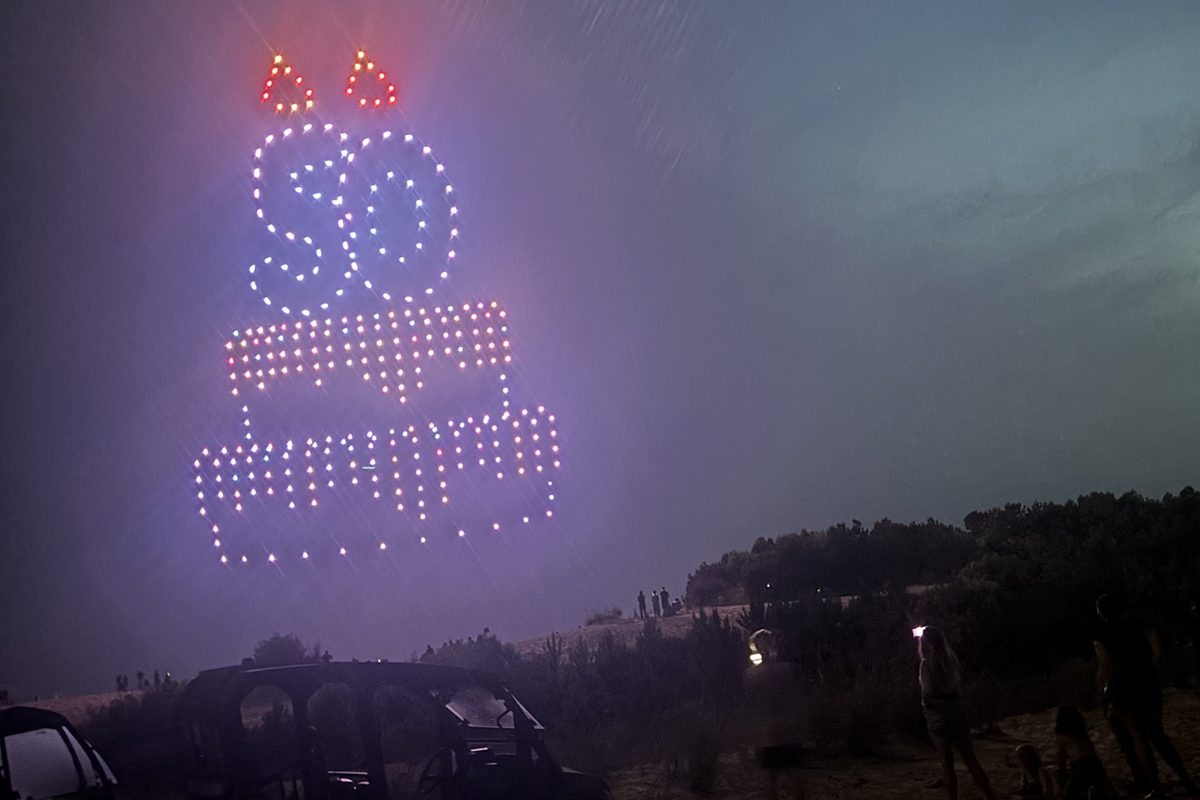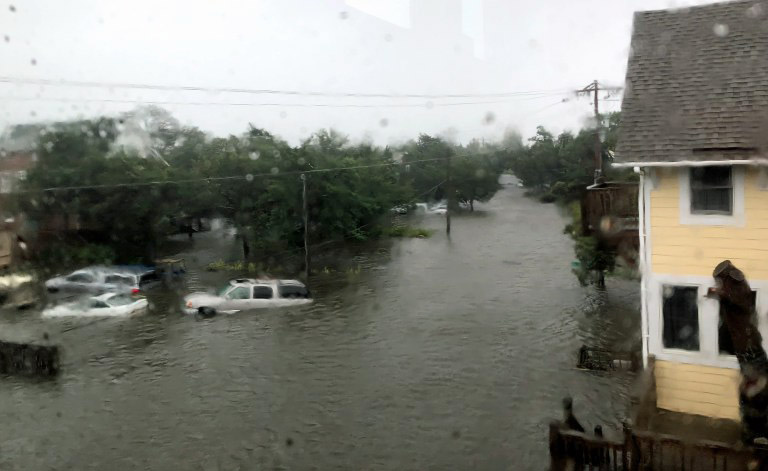
The following are observations about Dorian from longtime Ocracoke residents who were here when it struck and have had experience with previous hurricanes, as recorded and transcribed by Peter Vankevich in early July.
Trudy Austin
My name is Trudy Austin, a 10th generation on Ocracoke here, graduate of the class of 1982. Growing up here, you heard the stories of all the storms on Ocracoke. And it seemed like you lived through them. I heard my grandparents and my mother especially talk about the ’44 storm.
Supporter Spotlight
Every hurricane season, my mom, like clockwork, would reflect on that day.
“That ’44, you know, happened during the daylight hour,” she would say. The day before it arrived, the Coast Guard taped up a warning notice right on the live oak tree there. Later, it was a beautiful starry night. And the next day, just so quick like Dorian, it hit. Someone came with a skiff and put her in it to save her. So, we grew up with all those stories, imagining that this would probably be the worst thing that we would ever experience in our lifetime or see once in a lifetime.
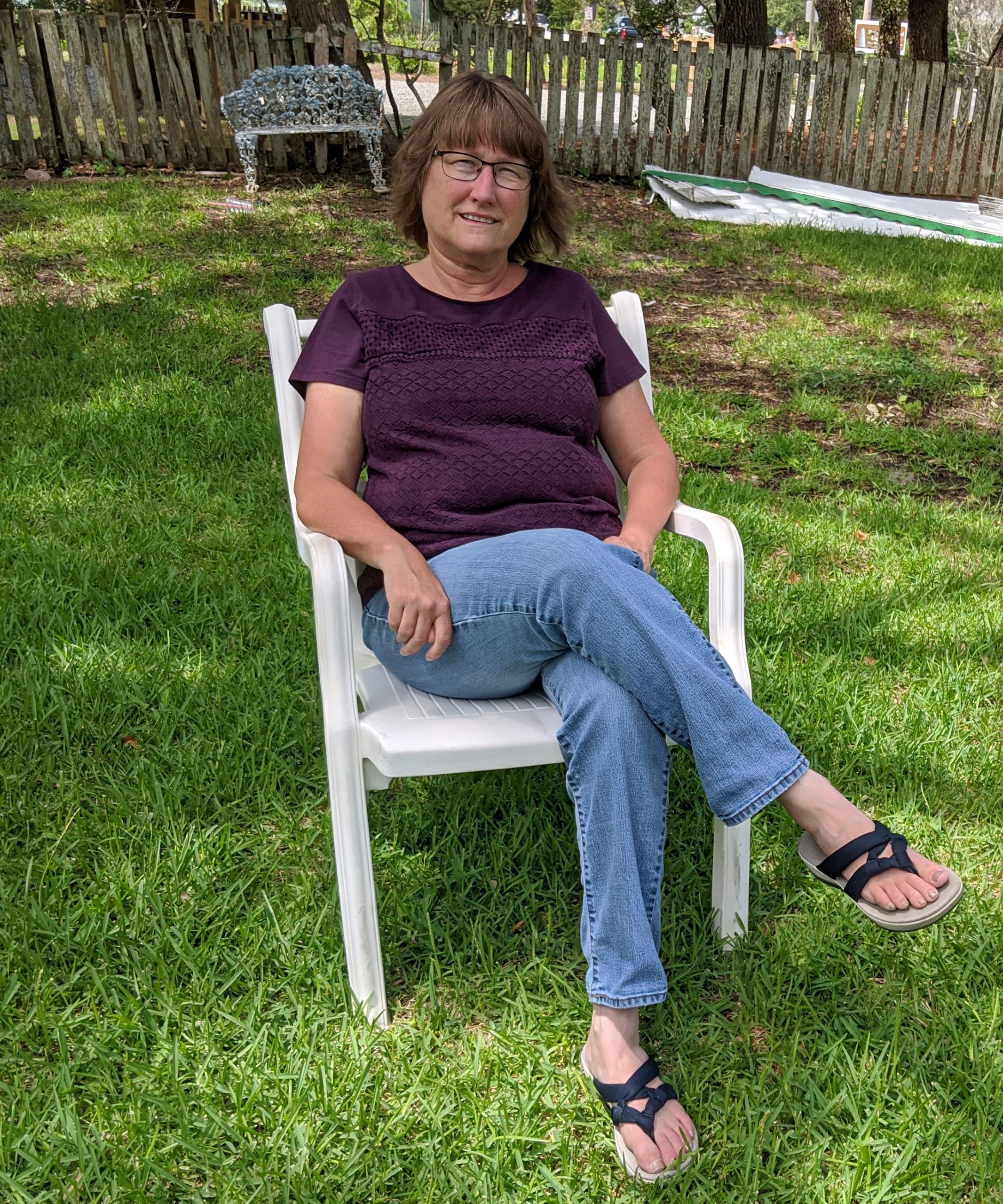
I’ve only left the one time in 1984 with Gloria that did a lot of devastation, that was the first time since 1963 that a little bit of water came in the back door.
Growing up, my sister, Tammy Tolson, and I always had hurricane shifts. This time with Dorian, Tammy was up from 2 a.m. until she come knocking on the room said, “I think the eye is going over. I’m gonna grab some sleep.” And I said, “Okay, I’ll just set up and watch the backside of the eye just to make sure.”
Then the surge arrived.
Supporter Spotlight
I actually had a chance to take three little videos on my phone from my front door facing the lighthouse and the back door, about 60 seconds apart. Then the water was up to my waist in the utility room on the third video. It was that quick.
It was the first time we had rising water in the house and because it is low, we made the decision to go to our rental property, Sabra’s Cottage, right behind us which is elevated 7 feet. We waded up to our necks and made it, soaked but safe.
And that’s when the boats were going by to rescue folks. It was very similar to how my mom described the ’44, but this water was definitely a lot higher than even what she’s always talked about.
Dorian’s impact? For hurricanes, my mom and dad were always prepared days in advance, they took each one 100%. Because going through the ’44, it changed their lives and their way of thinking, how to prepare for them. And Dorian has totally changed mine and talking with island people, they are now looking at hurricane season as if it is looming over you.
A lot of people are thinking not if we are going to get another, but it’s more like when we get one as bad as Dorian.
Dorian is my ’44. Yes, it is. Even though I think we got more to come. I’m hoping that, yeah, this is the ’44 for us to ever see.
Alton Balance
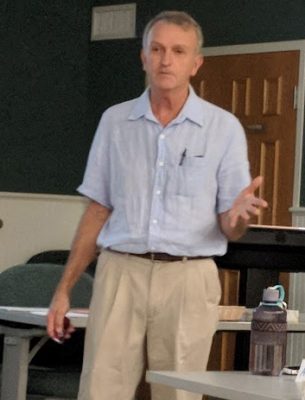
Okay, my name is Alton Ballance. My mother’s and father’s ancestors on Ocracoke stretch back to the 1700s. I graduated from high school here in 1974. I studied at UNC Asheville for two years and then at UNC Chapel Hill, getting a degree in English education.
Following that, after some time working on my book, “Ocracokers,” I taught in Hillsborough for two years. I then came back to Ocracoke School and taught for 20 years, including being assistant principal. In 2003, I joined the Ocracoke campus staff of the North Carolina Center for the Advancement of Teaching (NCCAT) whose mission is to advance teaching as an art and profession. I retired in 2017.
I’m also owner of the Crews Inn on Back Road.
I became a county commissioner in 1984. At that time, we had not had any hurricanes of any significance for several years, just a few little brushes. So, there had not really been any significant planning or preparation for hurricanes. But Hurricane Gloria that year got everybody’s attention and was, back then, the most destructive storm of my lifetime. The forecast was so ominous that all but about 100 people left the island.
With no hurricane plan, it was basically go to Dare County and evacuate with them.
So, one of the first things that I did following Gloria was to create a hurricane evacuation plan and a control group that included the chief ranger for the National Park Service, the deputy sheriff, people from the Coast Guard and N.C. Ferry Division supervisors, and others that had to deal with evacuation, reentry and things like that. And we became a very tight group and we would meet in my remaining eight years as a county commissioner and deal with other hurricane threats.
But nothing, of course, had we faced back then like we have in the last couple of years. Hurricane Matthew (2016) put maybe an inch of water in my old house in the heart of the village. It skimmed the floors and I was able to open the doors and dry it out with no damage to the floor anything else.
Hurricane Dorian was an entirely different benchmark. And we haven’t seen anything like that since the hurricane of 1944. It was a game changer in the sense of a tremendous destruction in terms of the flooding that took place. It allowed people to see what a storm of this magnitude could do to structures that were not elevated. It also compromised our transportation system with Highway 12 being closed and the Ferry Division at Cedar Island and Swan Quarter not being able to provide enough of a schedule to meet the demands of support vehicles, supplies, and just residence traveling in their normal course.
Dorian launched me into a very intense rebuilding of my two places. I had to rebuild not only stronger but also smarter. For example, all my receptacles are now 40 inches above the floor and there is no wiring underneath the house.
I do believe there is climate change; there is certainly global warming. And the one thing that opened my eyes the most of that was when I was doing an NCCAT seminar on sea level rise. We had one of the world’s foremost experts on glaciers, Bruce Molnia, come and talk to us. He had been an early student of Orrin Pilkey at Duke. That day that he showed us a 1960s photo of this glacier in Alaska, then photos of it from the ’70s, ’80s, ’90s, 2000 and 2010. And he asked, “what happened?” Everybody said the glacier is gone. And then the next question was, “where did it go?” It melted. It went into the sea.
So, you know, the scientists like him who have devoted their lives to studying this on the ground, measuring and looking at the science of gathering the data, studying the weather trends and temperatures. They see it’s not really to be disputed that things have changed. Do you have heat waves and then cold waves? Of course, but overall, there’s that pattern that affects the dynamics of hurricanes. Hurricanes like warm water. They like heat. They’re drawn to it. So, there is the potential that we’re going to have increased hurricane activity.
I think Dorian forever changed our view of the power and potential of hurricanes. And here we are at another season. And I think some people are certainly much better prepared. Everybody is nervous, you know at what it might do, not just to individual homes and businesses and transportation infrastructure, but also to the economy, and how Ocracoke can sustain itself.
Philip Howard
Philip Howard’s Ocracoke heritage goes back to the 18th century. He is one of the island’s preeminent historians and publishes the online Island Journal.
My father and I built the Village Craftsmen on historic Howard Street in 1973 a few inches higher than high tide in the 1944 hurricane (the highest tide in living memory at that time). We have been documenting storm tides at there since Hurricane Gloria in 1985.
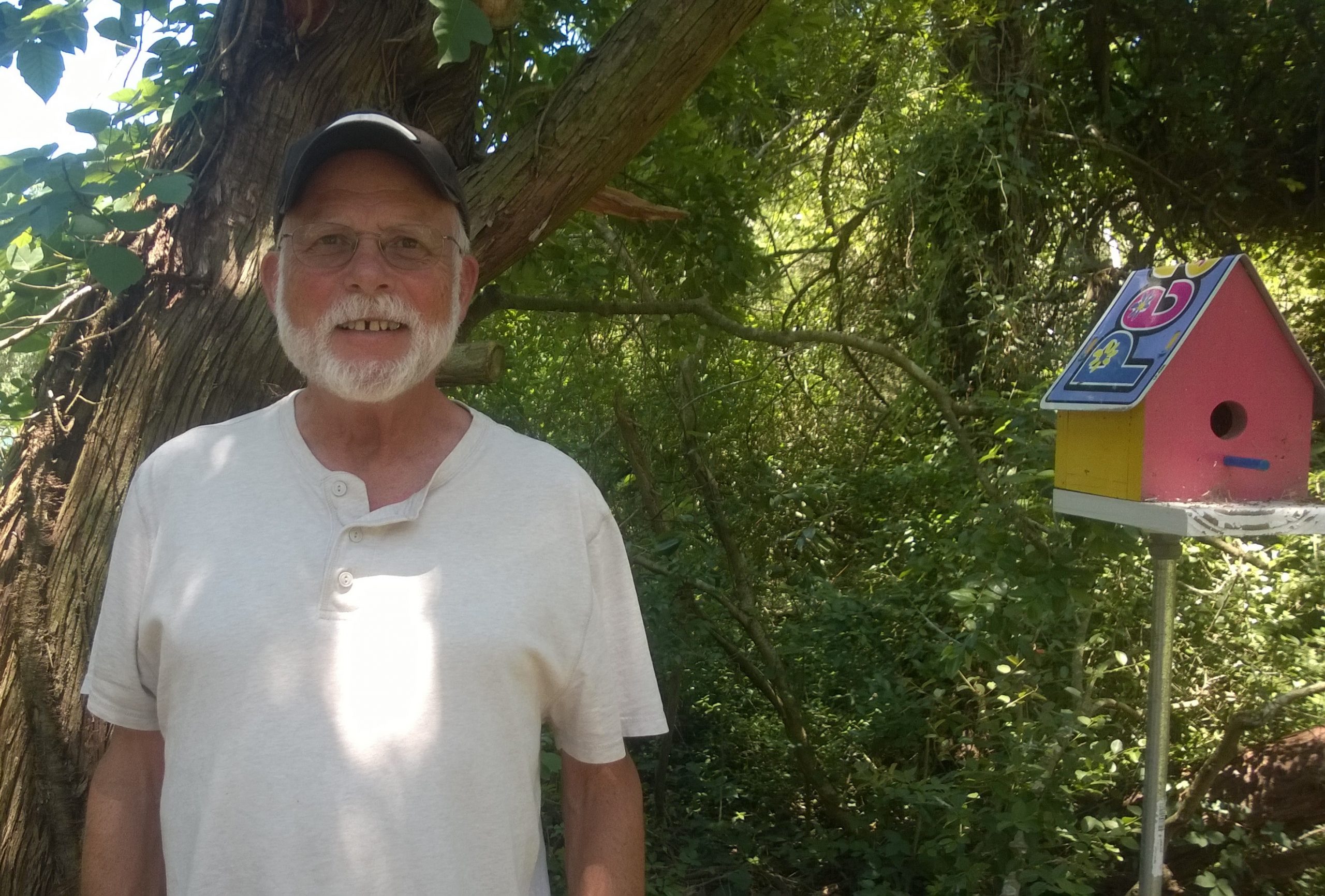
When Hurricane Matthew came ashore in 2016, it brought the highest tide we had ever experienced up to that time, 28½ inches above the ground. However, tide water did not enter Village Craftsmen.
Hurricane Dorian produced a storm surge of about 7 feet. The tide was at least 1 foot higher than the surge from the ’44 storm. It was 56 inches above ground level, and 27½ inches higher than Matthew, and 10½ inches of tide water flooded Village Craftsmen.
For years, islanders thought any first floor above about 4 feet above ground was safe from tidal flooding. Of course, we’ve learned that is not the case. The question now is, “Was Dorian a once-in-a-lifetime event, or is it the new normal?”
Since Hurricane Dorian, which damaged dozens of buildings (at least 50 have been demolished as I write), many homes and businesses have been elevated, and many more are scheduled for elevation. Flood insurance, often neglected as an unnecessary expense, is now embraced by nearly everyone on the island.
In many cases, recovery from Hurricane Dorian has required replacing floors, walls, electric outlets, household appliances, and furniture. Complete kitchens and bathrooms have been rebuilt, as well as entire homes. Hundreds of automobiles, as well as lawnmowers and other tools, were flooded beyond repair. In addition, many trees were uprooted and building pilings compromised.
Many islanders’ homes were so damaged that they were (and some still are) displaced because of the damage. In addition, Ocracoke’s transportation system (roads, ferries, docks, channels, etc.) continue to be threatened by storm surges, not only from named hurricanes, but from other seasonal storms as well.
I anticipate many more months to pass before everyone is fully recovered from the devastation from Hurricane Dorian.
Ocracoke residents and homeowners were the beneficiaries of numerous volunteer organizations and individuals who offered, time, expertise, comfort, and financial assistance to mitigate the trauma. Various governmental and public and private agencies have provided loans and grants to help homeowners and business owners. Many island businesses have reopened, but several are still closed while making repairs. A few have closed permanently.
As the 2020 hurricane season advances, I anticipate growing anxiety as we approach August and September, typically the most active period for storm development. Any major storms whose predicted tracks include the North Carolina coast will be cause for heightened concern.
Islanders have been acutely aware of global warming and rising sea levels for quite some time. Long-term solutions for individuals whose families have lived here for generations, as well as for relative newcomers who have built homes, established businesses, and immersed themselves in this community, can seem intractable. Few can imagine moving away. Family, friends, and a love for Ocracoke bind residents to this beautiful place. Homes, mortgages, business interests, and decades of involvement in the community keep people anchored to Ocracoke.
We can only hope that elevating homes and businesses, as well as staying informed about preparations for future hurricanes, along with local, state, and federal assistance in maintaining our roads and ferries (as bridges, tunnels, and roads are financed and maintained throughout the rest of the state) will help us deal effectively and creatively with any future storms.
Tom Pahl
Tom Pahl is the Hyde County commissioner for Ocracoke Township. He has lived on the island for 15 years and visited since a child. He is a licensed general contractor. His business, Landmark Designs, specializes in historic preservation. He witnessed the power of Dorian with his wife Carol at their home across from Silver Lake Harbor.
My experience with Hurricane Dorian was as an individual, a builder, as the county commissioner and chair of the Control Group. I was here during the storm and throughout the long recovery stages. The storm had a significant impact on my business that I had to reorganize it to accommodate my responsibilities as the chair of the control group and county commissioner.
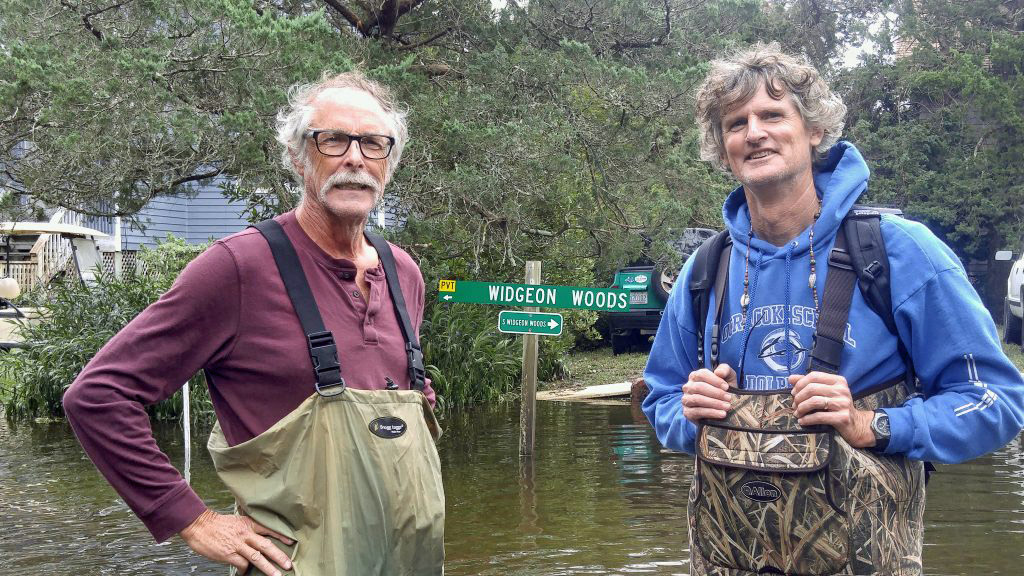
I played a significant part of the decision to order an evacuation which is always focused on getting the visitors off the island. The reason for that is that following a hurricane, ferry services are suspended, and we have limited resources. We may have electricity, but it may be in limited supply. We definitely have minimal health care of any kind and food supplies are limited.
I’ve been involved in many of those decisions when we will issue an evacuation that includes residents. But we know very well when we do that, that we aren’t going to enforce it on them. It is just for the purpose of emphasizing to the residents of the island the importance of taking a storm seriously, especially if they have health issues or young children, etc. The people who have lived here for years, know very well what’s involved with a hurricane.
If I could just suggest to the powers that be, have all our storms come during the daytime. It’s a lot less frightening when you can see what’s going on. A nighttime hurricane is a lot scarier because you can hear but can’t see. With a daytime storm, at least you can get some sense of its intensity.
In that early morning, we watched Dorian come in and didn’t anticipate that it was going to be any more nor less significant than a lot of hurricanes that we’ve been through. But then, we started watching the water come in. Normally, our experience is that the water kind of rises like in a bathtub. This water rushed in like a river, and that was the first sign to us that this might be a little bit different than what we’ve experienced before. There was whitewater in front of our yard. And it just kept on rising. It hit the Hurricane Matthew (2016) level, which was our high-water mark to that point, and then it continued rising for another foot and a half or almost 2 feet above Matthew. We saw breaking waves from the sound coming across Highway 12.
When it came up to our top step and onto our porch, we suddenly considered our safety. We started moving critical things up to our second floor, not knowing when it was going to stop, but fortunately it did and reversed fairly quickly. It went out almost as fast as it came in.
Meanwhile, I was receiving text messages and phone calls about people around the island who were in trouble. I passed those messages along to the fire department. By that point, everybody knew we were in deep trouble.
The water dropped quickly enough that I put on a pair of chest waders and headed down Howard Street to see one of the families that I had got a message about that was in trouble. The new Methodist pastor Susie (Fitch-Slater) and her husband Tom (Slater) had apparently been driven up into their attic. I didn’t get very far and started to worry the still flowing current was strong enough that I would get knocked over. So, I went back and got a couple of walking sticks and sort of felt my way through the flowing water down toward their house.
Pastor Susie, I think, had only been here a couple of weeks. At that point, I had not yet been introduced to her. Their door had been pushed open by the water. I called out, you know, “Hello, hello,” and saw them sitting on their attic stairway. “Hi, Tom Pahl here. We haven’t met yet and I just wanted to introduce myself. I’m county commissioner and just wanted to welcome you to Ocracoke.”
I think it was funnier for me than it was for them.
By that evening, I moved from being Tom Pahl, private individual, to being a county commissioner. The State Emergency Management sent a bunch of people over by Blackhawk helicopter. And they brought county manager Kris Noble with them and so we began setting up an emergency operation that evening at the fire station and went full force on organizing the next day.
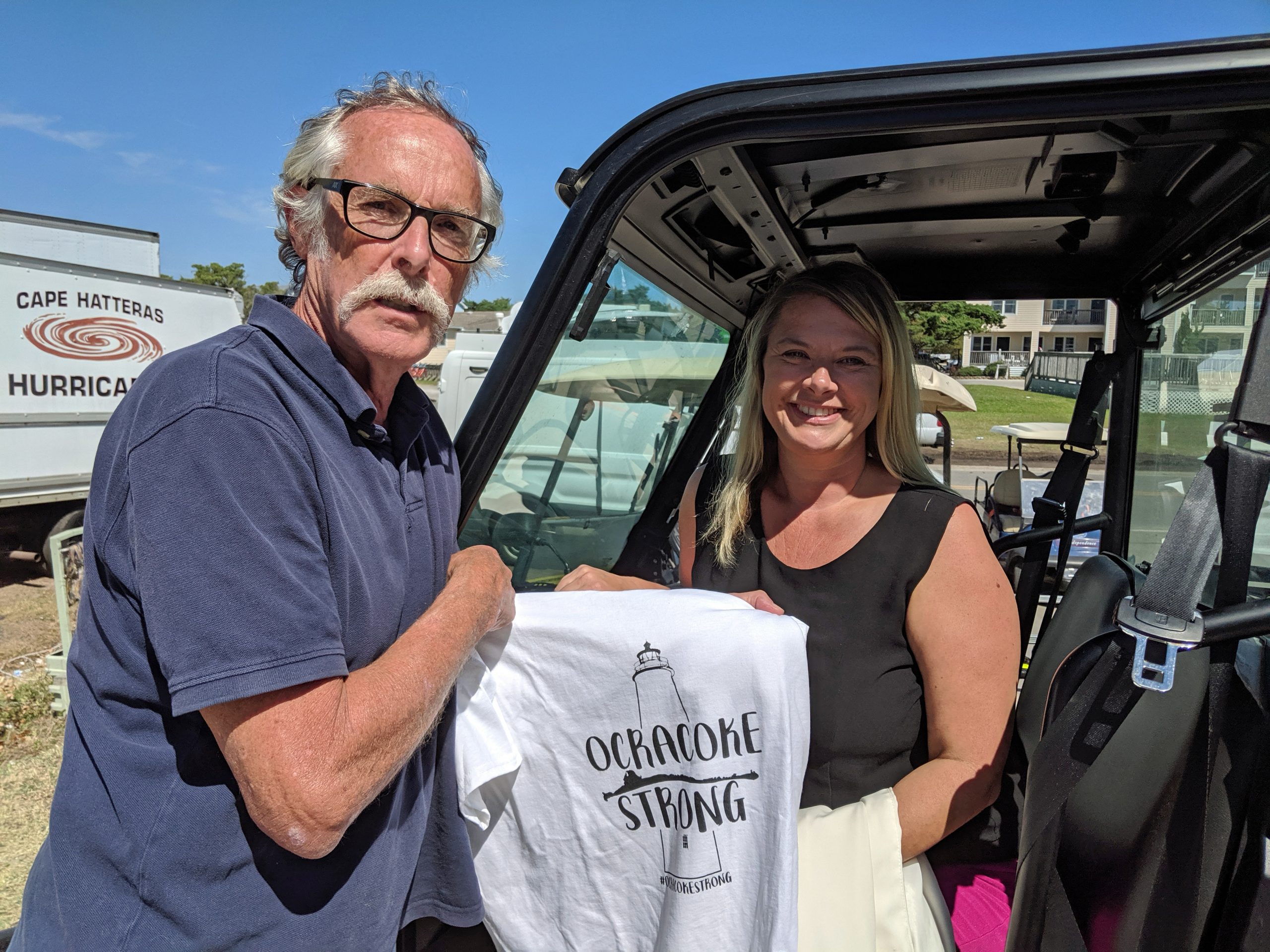
My life changed significantly in that I was basically working 12 to 14 hours a day on really two things: One was to create an organization that could manage the recovery, and then to being a part of that organization and managing the recovery, which was for the first couple of weeks at least, basically triage every single day.
Almost minute by minute, problems would come to us and we tried to decide which ones we could afford to push away for now, so that we could give our attention to the more critical ones.
It was a fascinating process and we had a lot of people step forward from the community who wanted to be a part of the recovery.
We had tremendous amount of donations from off island and how to manage them that was really one of our biggest jobs in terms of organization.
Dorian brought home to us, in a way that nothing else could have, the impact of climate change and what we can anticipate in the future. Our lives, our community, our economy, our social structure on the island have all been dramatically affected by the storm.
We need to think about the future of Ocracoke in ways that we haven’t before. We’re at the point now where we have to quit talking about talking about it and actually make some plans for the future and to work toward being the more resilient community because that’s our only option.
By resilience I mean it’s both physical and emotional. Physically, if you drive around the island now, you’ll see dozens of homes that have been or are being elevated and many others that are going to be.
Emotionally, we need to be a community that understands what the challenges are coming and be ready for them.
I want to end by saying the level of generosity was heartbreaking. It was like nothing I’d ever experienced before. I didn’t know that amount of generosity existed in the world. It was a period of time when there was so much goodness flowing to this island that there wasn’t a day and in some days there wasn’t an hour that didn’t go by, where some act of kindness didn’t just cause tears to run down my face. I mean, people were so good and so kind, just overflowing with kindness and love for the island.



